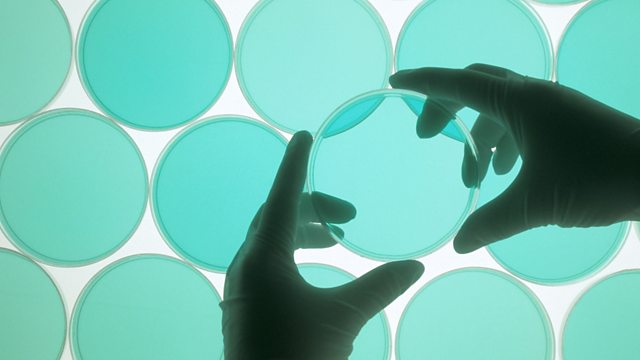24/07/2009
NASA's Orion. Deep Impact on Jupiter. Making Waves. Clouds and Climate Change. Formula Student.
ORION
Forty years on from the Apollo Moon landing, NASA engineers are busy developing the latest spacecraft, Orion, which they hope will go back to the Moon and beyond.
But before this can happen, the craft must undergo rigorous tests at NASA鈥檚 Ames Research Center near San Francisco. This includes testing the aerodynamics in a wind tunnel and by firing small scale models out of a specialist gun. Richard Hollingham meets the team behind these tests, and hears about the differences and similarities, between Orion and Apollo.
DEEP IMPACT
On Sunday an amateur astronomer spotted a dark mark on the surface of Jupiter, the result of a collision with a large object. Leigh Fletcher of NASA鈥檚 Jet Propulsion Lab in Pasadena describes how It provides an amazing opportunity to learn more about the planet, and has been keenly observed by astronomers all over the globe.
MAKING WAVES
Geologists have found that the risk of a huge Pacific Ocean tsunami on the West Coast of America could be greater than they previously thought. The study was published in Quaternary Science Reviews and showed that future tsunamis could be even bigger than that caused by the 1964 Alaskan earthquake, the second biggest in recorded history. Jon Stewart spoke to Professor Ian Shennan from Durham University who was behind the study.
CLOUDS AND CLIMATE
The role of clouds in climate change has been hotly debated, but understanding the link between the two could be critical in order to make predictions about the future of the global climate. To shed some light on the problem, researchers looked at recordings of cloud cover over the last fifty years. The results showed that some of our computer climate prediction models could be off the mark. Jon Stewart spoke to Amy Clement, of Miami university, who was one of the team behind the report in the journal Science.
FORMULA STUDENT
Formula Student is run by the UK鈥檚 Institute of Mechanical Engineers, and challenges students to design and build a small single-seater racing car. Last week, over 100 teams from all over the world converged at Silverstone racetrack to pit their vehicles against each other. Science in Action producer Martin Redfern spoke to science minister Lord Drayson and head judge Jon Hilton about the engineering talent on show at the event. He also went trackside to meet some of the teams and their entries, including the world鈥檚 first fuel cell racing vehicle.
Last on
Broadcasts
- Fri 24 Jul 2009 09:32GMT成人快手 World Service Online
- Fri 24 Jul 2009 15:32GMT成人快手 World Service Online
- Fri 24 Jul 2009 19:32GMT成人快手 World Service Online
- Sat 25 Jul 2009 00:32GMT成人快手 World Service Online
- Sun 26 Jul 2009 03:32GMT成人快手 World Service Online
Podcast
-
![]()
Science In Action
The 成人快手 brings you all the week's science news.


